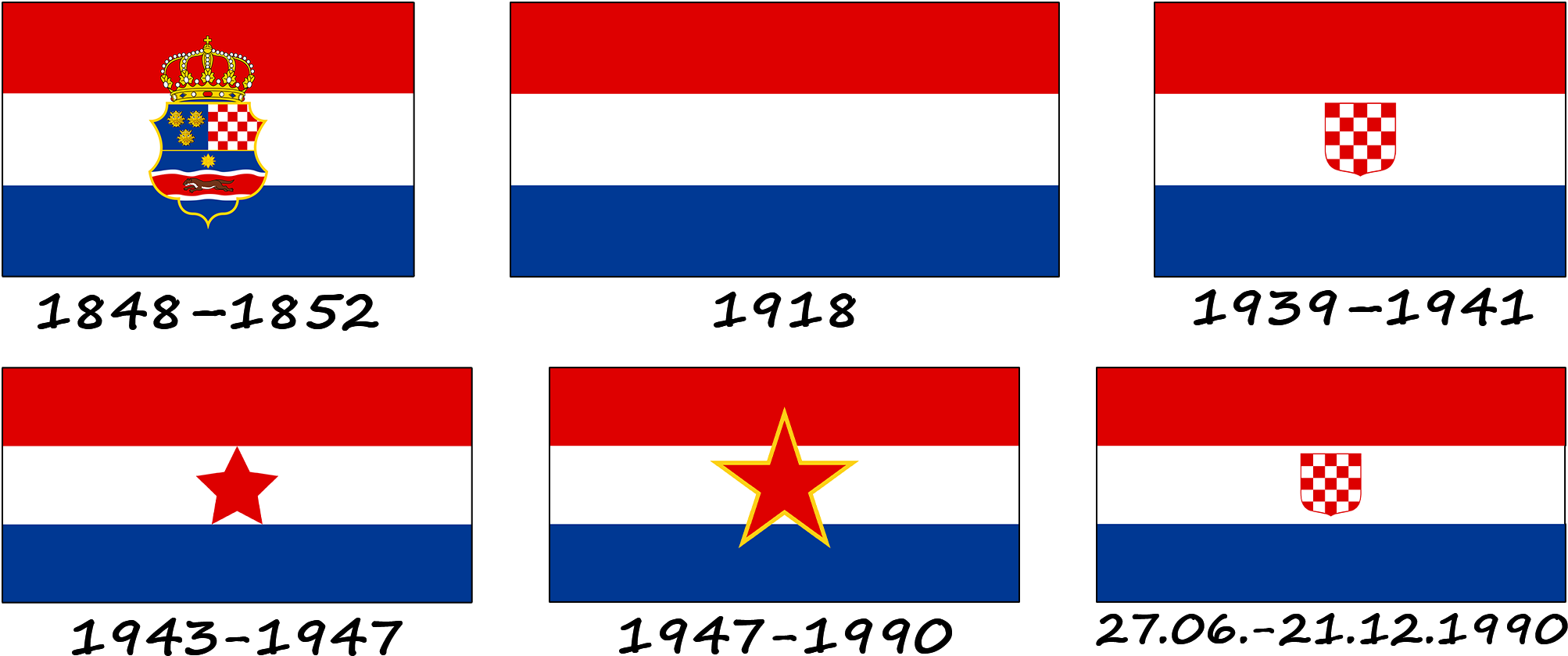The first appearance of the flag was not from the state, but as a personal flag of Count Josip Jelacic-Bujemski (an Austrian commander of Croatian origin). It contained a red and white flag of Croatia and a white and blue flag of Slavonia, and in the middle was a shield with a royal crown divided into three parts containing
- Croatian coat of arms - a checkerboard white and red field;
- the coat of arms of Slavonia - the upper blue part with the image of a star, and between two white lines symbolizing rivers, there is an image of a marten on a red background;
- the coat of arms of Dalmatia is a blue shield with three lion heads.
This flag was raised for the first time on June 5, 1848, during the enthronement of Josip Jelacic as Ban. Since then, Croats have been using the red, white, and blue tricolor as a national symbol. For some time until the 1860s, the use of the tricolor was banned, but it was then officially adopted by the Croatian-Hungarian peace agreement in 1868.
In 1918, Croatia lost its statehood and, accordingly, its official flag. At that time, there was only a flag with a tricolor, without a coat of arms in the middle. In 1939, the coat of arms with a chessboard became the coat of arms of the Croatian National Day and a unique symbol of political and national identity. Although most flags during the Croatian War of Independence had a coat of arms, a simple tricolor without a coat of arms was also used.

In the period from 1943 to 1945, the flag of the Federal State of Croatia was used. Then, until 1947, an absolutely identical flag was used, but under a different name - the flag of the People's Republic of Croatia, and in the third period from 1947 to 1990 - the flag of the Socialist Republic of Croatia. In general, this period from the 43rd to the 90s can be united by a common flag, as it was almost identical and looked like a red, white, and blue tricolor with a red star in the middle. Only in the latest iteration of this flag was the star enlarged and a golden outline added.
In 1990, Croatia returned to using the old tricolor with a chessboard of 25 red and white squares. A version of the new flag of the Republic of Croatia was first officially displayed on May 30, 1990, on Ban Jelacic Square, and on December 21, it acquired its current appearance with a coat of arms and a crown in the shape of the five historical coats of arms of the Croatian countries.







